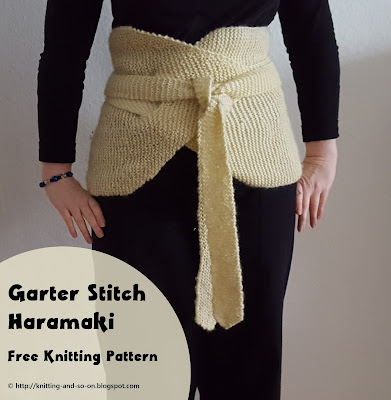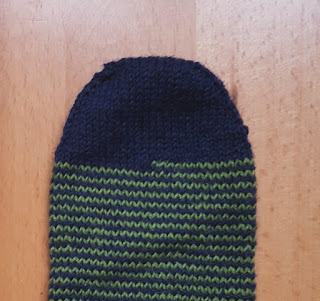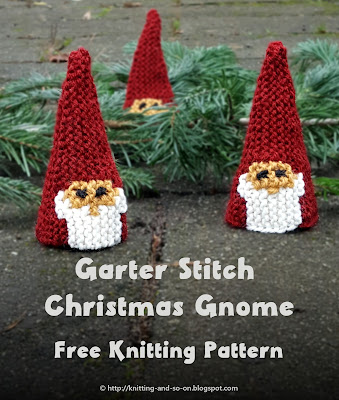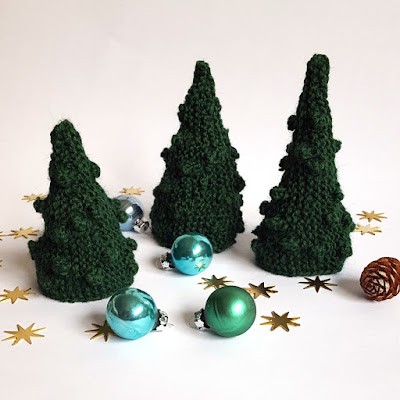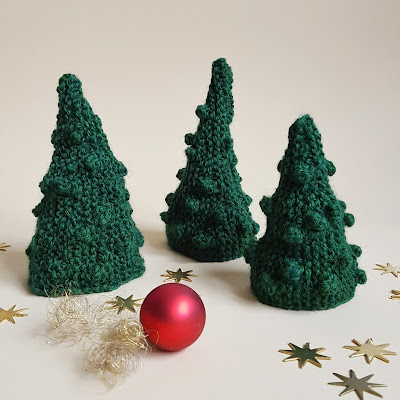The piece is knitted all in garter stitch and therefore quite easy to knit. It is suitable for beginners as well.


This work by Knitting and so on is licensed under a Creative Commons Attribution-NonCommercial-ShareAlike 4.0 International License.
A danish translation of this pattern was written by Marianne Holmen of strikkeglad.dk - it is available here.
Materials
- about 150 to 250 grams of DK weight yarn
- 4.5mm needles
- a tapestry needle to weave in ends
- some scrap yarn to mark the RS
Techniques
- Short rows (with any technique you like) - since this is all garter stitch I used "wrap and turn" technique (w+t, see this YouTube video by Very Pink Knits). But any other technique will work fine as well.
- Backwards loop cast on: a cast on that can be inserted in the middle of the row, see this YouTube video also by Very Pink Knits
Construction
As shown below the piece is constructed of two straps and a body piece. You begin by knitting one strap, then you increase to get the desired width for your body piece - here you insert a whole. Then you knit the piece including some short rows (to make it fit around waist and hips). When the body piece is long enough to fit around your waist, you decrease and knit the second strap. The hole is needed to pull one strap through.
Measurements, How to Calculate the Short Rows and Gauge
In order to knit this piece to fit your body, you need to take the following measurements:
- your waist circumference (w) and
- your hip circumference (h)
If you don't want to calculate, I have included below a summary of a clothing size table for ladies I found on wikipedia, together with the ratio of normal ridges to short row ridges that I would suggest for the given size: e.g. if you are an S-size, knit 3 normal ridges and then one short row ridge or for and XL knit 5 normal ridges and then one short row ridge. (Yes, the ratio is not very exact, but the piece will be very stretchy, so it should be fine.)
| XS | S | M | L | XL | XXL | |
| Waist (cm) | 58 – 64 | 65 – 72 | 73 – 81 | 82 – 90 | 91 to 102 | 103 – 114 |
| Hips (cm) | 80 – 89 | 90 – 97 | 98 – 104 | 105 – 112 | 113 to 122 | 123 – 134 |
| Ratio | 3 to 4 | 3 to 4 | 4 to 5 | 4 to 5 | 5 to 6 | 5 to 6 |
With the yarn I used I had the following gauge in garter stitch: 16 sts gave 10 cm in width and 15 ridges (30 rows) gave 10 cm in height.
The finished piece was about 35 cm wide in the mid part of the body piece.
If you have different gauge, you can adjust the width by doing more or less increasing rows (and also the decreasing rows).
Instructions
1st strap
CO2
R1 (RS): k all
R2 (WS): kfb, k to last st, kfb
Repeat rows 1 and 2 until there are 10 stitches on your needles
Then knit garter stitch rows (k all), until the strap measures your waist circumference plus 15 cm.
Body piece
Increasing part
R1 (RS): k all
R2 (WS): kfb, k to last st, kfb
Use some scrap yarn to mark the RS. Repeat these rows until there are 48 stitches on your needles.
For the hole, knit the following two rows once:
R1 (RS): k20, BO8, k20
R2 (WS): k20, CO8 (with backwards loop CO), k to last st, kfb
Then continue with some increases on the lower end (hip):
R1 (RS): k all
R2 (WS): k to last st, kfb
Repeat until there are 56 sts on your needles
Measure the length of the piece from the beginning of the increasing part.
Mid part
According to the ratio calculated above knit normal ridges and short row ridges.
Normal ridge (RS and WS): k all, turn, k all
Short row ridge (RS and WS): k25, w+t, k to end
Repeat until the lower edge measures your waist circumference minus the length of increasing part. The piece will stretch quite a bit when you're wearing it, so stretch it while measuring it.
Decreasing part
R1 (RS): k2tog, k to end
R2 (WS): k all
Repeat until there are only 48 sts on your needles
R1 (RS): k2tog, k to last 2 sts, ssk
R2 (WS): k all
Repeat until there are only 10 sts on your needles
2nd strap
Now that there are only 10 stitches on your needles, knit garter stitch rows (k all), until the strap is as long as the first strap - finish the tip as follows:
R1 (RS): k2tog, k to last 2 sts, ssk
R2 (WS): k all
Repeat until there are only 2 sts left.
BO these 2 sts.
Weave in ends and block gently.
This blogpost was featured at the Linky Ladies Community Link Party #88 and at the Knitting Love Link Party #18 (February 2017). Thank you!

